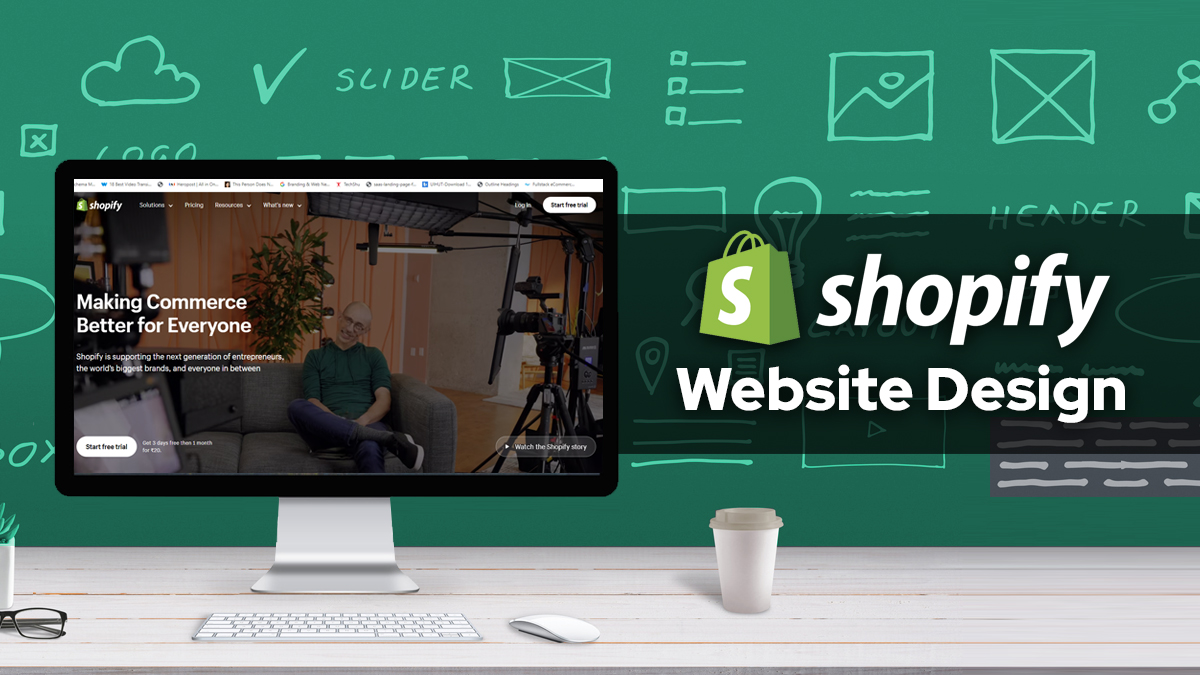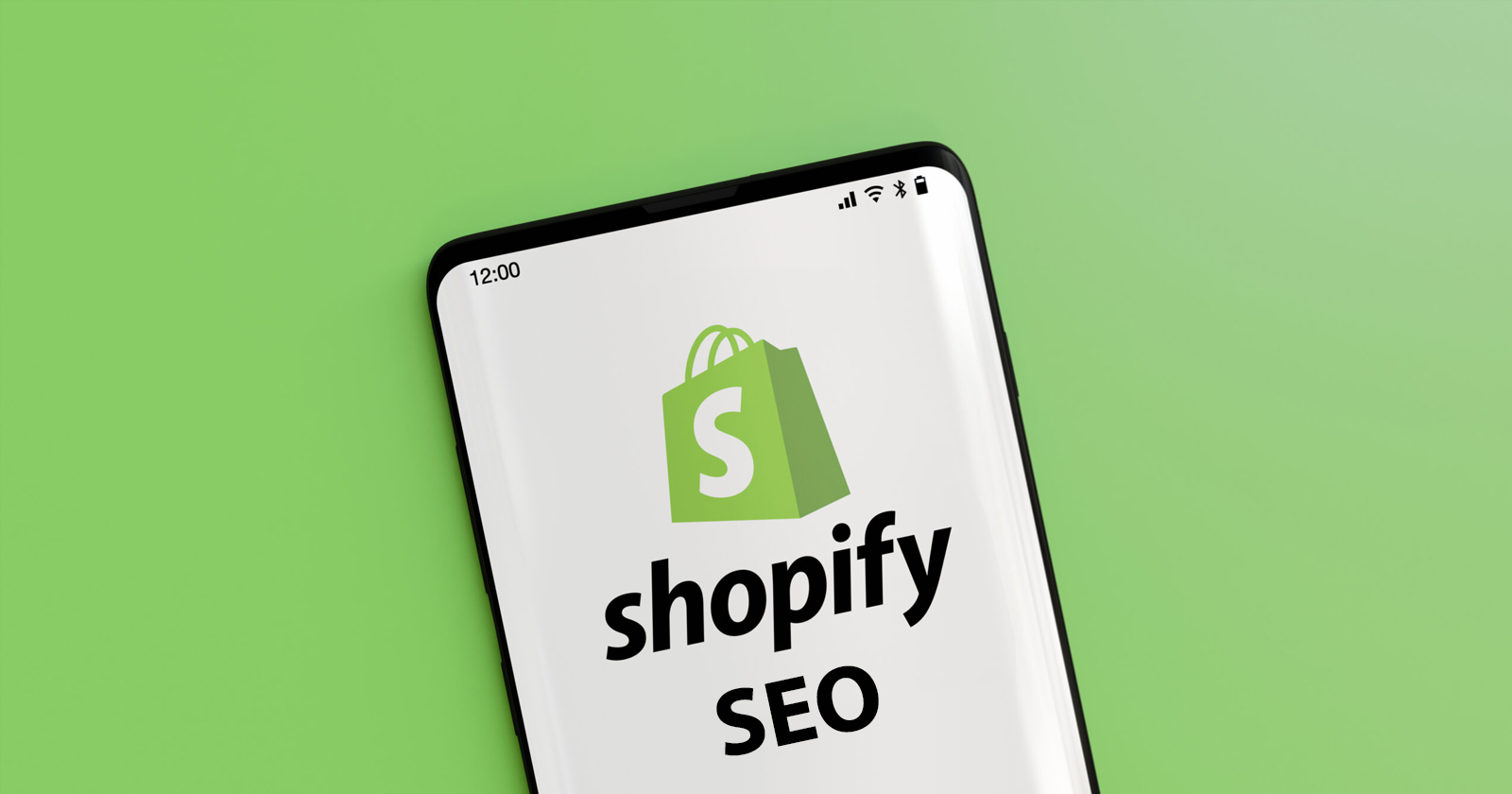Creating an effective Shopify web design is crucial, as it forms the initial impression users get when they visit your online store. Therefore, paying close attention to the details of Shopify web design is essential to attract visitors and guide them toward making informed purchasing decisions.
During the Shopify web design process, merchants must carefully consider various factors. These include planning the layout and design elements, utilizing Shopify themes to enhance visual appeal and functionality, incorporating essential Shopify web design apps for additional features and customization, and ensuring that all design decisions align with conversion optimization and other key performance indicators (KPIs).
This comprehensive guide provides an in-depth look at every aspect of creating an outstanding Shopify web design. By applying the insights shared here, your online store will not only stand out in a competitive market but also offer an exceptional user experience that encourages lasting engagement and drives conversions.
Strategizing Shopify Web Design: Planning Your Website Creation
In the initial planning phase of designing a Shopify website, it’s essential to consider the direction of your online store thoroughly. This involves understanding your brand’s unique identity and the specific goals you aim to achieve through the Shopify web design process. By identifying key performance indicators (KPIs) that align with your objectives, you lay the groundwork for informed decisions throughout the design process.
Your brand’s identity is the foundation upon which your Shopify website will be built. It influences every aspect of the design, from the selection of Shopify themes to the layout of the website and the overall user experience.
Similarly, the KPIs you focus on provide valuable guidance for shaping the design strategy. Whether you’re aiming to increase conversion rates, enhance customer satisfaction, or reduce bounce rates, these metrics inform the design choices that will drive success for your Shopify store.
As you progress through the design process, keep these considerations at the forefront of your decision-making. Continuously refer back to your brand identity and chosen KPIs to ensure that every design element advances your goals. By maintaining this focus, you can create a Shopify website that reflects your brand’s personality and delivers tangible results in user engagement and performance metrics.
Choosing the right company for Shopify design and development is crucial because their expertise can have a significant impact on the functionality, aesthetics, and overall success of your online store.
Selecting The Perfect Theme For Your Shopify Store
Once you’ve outlined your objectives and goals, the next critical step in creating a successful Shopify website is selecting the appropriate theme. Your chosen theme forms the foundation of your store, shaping the user experience, defining your brand identity, and establishing the overall atmosphere. It’s a crucial decision that directly impacts how your customers interact with your site and perceive your brand.
The Shopify theme store is a valuable resource in this process. It offers a wide range of designs to explore, allowing you to refine your preferences and find the perfect fit for your brand and vision. With numerous themes available, each providing various style variations and customization options, you can tailor your website to align with your unique requirements and aesthetic preferences.
While some themes are free, others come with a one-time fee, typically ranging from $140 to $180. Although free themes can be a cost-effective option, paid themes often provide more advanced features, customization options, and support, making them a worthwhile investment for those seeking higher functionality and customization.
For those aiming to stand out in a competitive market, opting for a fully bespoke theme crafted by professional Shopify web designers is highly recommended. By investing in a customized solution tailored specifically to your brand and business needs, you can create a unique and memorable online presence that sets you apart from the competition and resonates with your target audience.
Also Read: Shopify Site Speed Optimization – How to Speed Up Your Shopify Site
Employing An Expert Shopify Web Designer
Collaborating with a Shopify web designer offers several significant benefits. Firstly, this approach allows you to avoid common, off-the-shelf themes used by many other online stores.
As a result, each page of your website will be crafted from scratch, ensuring a bespoke and tailored appearance that aligns perfectly with your brand identity and objectives. This method frees your website from the limitations of pre-existing designs within the Shopify platform, allowing for greater flexibility and creativity in the design process.
Additionally, engaging with a Shopify web designer removes the need for you to possess intricate skills or expertise in web design or development specific to Shopify. You don’t need to master advanced wireframes or delve into the complexities of Shopify’s backend functionalities. Instead, you can use the designer’s proficiency and specialized knowledge to navigate these intricacies seamlessly.
Moreover, Shopify web designers have skills and capabilities that allow them to push the boundaries of visual aesthetics. Their expertise enables the creation of visually stunning and immersive e-commerce experiences that captivate and engage users.
Each store they design exudes individuality and creativity, distinguishing it from generic online storefronts. By entrusting your website design to these specialists, you ensure that your online presence stands out in a crowded digital landscape, leaving a lasting impression on visitors.
Collaborating with a Shopify web designer empowers you to create a distinctive and compelling e-commerce platform without extensive technical knowledge or design expertise. It allows you to focus on your core business activities while leaving the design and development to seasoned professionals who excel in their craft.
Set Your Layout For Shopify Web Design
Many Shopify web design experts highlight the crucial role layout plays in boosting overall conversion rates. They stress the strategic placement of elements like calls-to-action (CTAs) above the fold and sticky navigation with contact information, simplifying customer inquiries about products or services. Experts advise designers to align the layout with specific actions or goals they want customers to take while navigating the site.
When it comes to layout design for a Shopify website, developers place a strong emphasis on maintaining a clutter-free interface. Instead of bombarding visitors with a plethora of products, merchants should concentrate on presenting a curated selection of specialized items, such as top sellers or promotional products. Developers assert that simplicity often paves the way for successful design.
Shopify developers advocate for a user-centric design philosophy, where the layout is meticulously crafted to facilitate seamless interactions and drive conversions. They consider how the layout influences the user’s journey through the website. By optimizing flow and minimizing the number of pages or clicks required to navigate from the homepage to checkout, designers can enhance the user experience and boost the likelihood of customers completing their purchase.
Exploring Essential App Categories for Shopify Website Design
As you advance in designing your Shopify website, a pivotal point arises in the strategic selection of apps to enhance and refine your site’s functionality. These apps serve a dual purpose, aiding in both website construction and augmenting your store’s features to enrich the customer experience.
It’s crucial to exercise discernment in this process, as haphazardly integrating apps can clutter your online store’s interface. This clutter not only diminishes visual appeal but also risks prolonging page loading times, negatively impacting user experience.
To make this decision wisely, it’s advisable to consider the following app categories:
- Loyalty and subscriptions: Apps fostering customer loyalty and managing subscription-based services.
- Customer support: Tools for efficient and effective customer support services.
- Sales channels: Applications expanding product reach through various sales channels.
- Marketing: Solutions optimize marketing efforts and enhance customer engagement.
- Productivity: Apps streamline internal processes and improve team efficiency.
- Sales and conversion: Tools boosting sales and optimizing conversion rates.
- Shipping and fulfillment: Solutions for managing shipping logistics and order fulfillment.
- Inventory management: Applications to efficiently manage and track inventory levels.
- Trust and security: Tools enhancing trust and security of your online store.
- Finances: Solutions for managing financial transactions, accounting, and related tasks.
- Reporting: Tools generating insights and analytics to inform strategic decisions and optimize performance.
By carefully assessing these categories and selecting apps aligned with your specific needs and objectives, you can optimize your Shopify website’s functionality and enhance the overall customer experience.
Also Read: How to Build an eCommerce Website From Scratch – Everything You Need to Know
Maximize Shopify Web Design KPIs
When designing a Shopify website, it’s crucial to consistently consider Key Performance Indicators (KPIs) to ensure optimal performance and user experience. One critical KPI to prioritize is web page loading time. Slow-loading pages result in a high bounce rate, where visitors leave without exploring further or making a purchase. This highlights the importance of optimizing loading times to retain visitors and encourage engagement.
Compressing images and file sizes before uploading them to the website improves loading times. Tools like TinyPNG enable efficient compression without sacrificing image quality. Additionally, it’s wise to be selective about the media content included in the website design, ensuring each element adds genuine value to the user experience.
Another significant KPI to monitor is the average session duration, which reflects user engagement with the website. A longer session duration indicates visitors are spending more time interacting with the content, typically associated with a positive user experience. To enhance this metric, consider integrating interactive elements like videos that captivate users and encourage exploration of multiple pages.
Improving average session duration can positively impact the website’s search engine optimization (SEO). Search engines favor websites that engage users for more extended periods, potentially leading to higher Shopify website rankings and increased organic traffic.
In addition to interactive elements, strategies such as upselling or cross-selling products can prolong the average session duration. By enticing users to explore related products or services, you extend their time on the site and increase the likelihood of generating additional sales. This can lead to an increase in the average order value, resulting in higher revenue for the business.
Achieve Shopify Web Design Goals And Define Brand Identity
The final step in creating a Shopify website involves a comprehensive evaluation to ensure that all components, such as theme selection, layout, customizations, and app integrations, accurately represent your brand’s identity and values. Your Shopify web design should serve as a clear expression of your brand’s personality. It’s crucial to assess whether your design choices align with your brand goals and effectively convey your message.
Since web design is a creative and subjective process, it’s essential to solicit feedback from others. This can offer valuable insights into whether different aspects of your design are perceived as intended and if the overall design is optimized from the customer’s perspective. Input from various viewpoints can help identify any inconsistencies or areas for improvement, ensuring that your website not only meets your standards but also resonates well with your audience.
Conclusion
The final step in crafting a Shopify website involves a comprehensive evaluation to ensure that all components, such as theme selection, layout, customizations, and app integrations, accurately represent your brand’s identity and values. Your Shopify web design should serve as a clear expression of your brand’s personality. It’s crucial to assess whether your design choices align with your brand goals and effectively convey your message.
Since web design is a creative and subjective process, it’s essential to solicit feedback from others. This can offer valuable insights into whether different aspects of your design are perceived as intended and if the overall design is optimized from the customer’s perspective. Input from various viewpoints can help identify any inconsistencies or areas for improvement, ensuring that your website not only meets your standards but also resonates well with your audience.
FAQs
Where do I begin with designing my Shopify website?
Start by planning your brand identity and target audience. Then, explore Shopify’s theme store to find a theme that reflects your brand’s style and industry. There are free and paid themes available, catering to different needs.
Do I need any coding experience to design a Shopify website?
No, coding experience is not necessary! Shopify offers a user-friendly interface with drag-and-drop functionalities. Without writing any code, you can customize your website using themes and pre-built sections.
What are some things to consider for mobile responsiveness?
In today’s world, most customers browse on mobile devices. Ensure your chosen theme is mobile-friendly and that your website layout adjusts automatically for different screen sizes. Test your website on various devices to guarantee a seamless user experience.
How can I optimize my website for search engines?
Use relevant keywords throughout your product descriptions, titles, and page content. Shopify offers built-in SEO (Search Engine Optimization) tools to help you optimize your website for search engines.



























